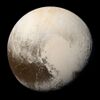Astronomy:2008 ST291
| Discovery [1] | |
|---|---|
| Discovered by | M. E. Schwamb M. E. Brown D. L. Rabinowitz |
| Discovery date | September 24, 2008 |
| Designations | |
| 2008 ST291 | |
| Minor planet category | TNO (SDO)[2][3] 6:1?[3] |
| Orbital characteristics [4] | |
| Epoch 23 March 2018 (JD 2458200.5) | |
| Uncertainty parameter 4 | |
| Observation arc | 3286 days (9.00 yr) |
| |{{{apsis}}}|helion}} | 156.396 astronomical unit|AU (23.3965 Tm) |
| |{{{apsis}}}|helion}} | 42.271 AU (6.3237 Tm) |
| 99.333 AU (14.8600 Tm) | |
| Eccentricity | 0.57445 |
| Orbital period | 990.04 yr (361611 d) |
| Mean anomaly | 23.2101° |
| Mean motion | 0.0009955°/day |
| Inclination | 20.7849° |
| Longitude of ascending node | 331.0475° |
| 324.3727° | |
| Physical characteristics | |
| Dimensions | 612 km (est. at 0.09)[5] 370–820 km (generic)[6] |
| Apparent magnitude | 22.3[1][7] |
| Absolute magnitude (H) | 4.2[4] |
2008 ST291, also written as 2008 ST291, is a trans-Neptunian object with an absolute magnitude of 4.2,[4] making it possibly a dwarf planet.[8] It is located near the 1:6 Neptune resonance of 99.4 AU (compared to its 99.3 ± 0.2 AU), meaning that it completes roughly 1 orbit for every 6 orbits Neptune makes.[3]
Size estimate
2008 ST291 is estimated to be about 612 kilometres (380 mi) in diameter, assuming a typical albedo of 0.09 for trans-Neptunian objects.[5] However, because its albedo is unknown and it has an absolute magnitude of 4.2,[4] it could be anywhere between 370 and 820 km in diameter.[6]
Distance
2008 ST291, currently 60.9 AU from the Sun,[7] came to perihelion in 1954.[4] It takes almost one thousand years to orbit the Sun.
2008 ST291 has only been observed 28 times over four oppositions and has an orbit quality of 4 (0 being best; 9 being worst).[4]
See also
- List of Solar System objects most distant from the Sun in 2015
- List of trans-Neptunian objects
References
- ↑ 1.0 1.1 "MPEC 2009-V68 : 2008 ST291". IAU Minor Planet Center. 2009-11-14. http://minorplanetcenter.org/mpec/K09/K09V68.html. Retrieved 2009-12-06.
- ↑ "List Of Centaurs and Scattered-Disk Objects". Minor Planet Center. http://www.minorplanetcenter.org/iau/lists/Centaurs.html. Retrieved 2009-12-06.
- ↑ 3.0 3.1 3.2 Marc W. Buie. "Orbit Fit and Astrometric record for 08ST291". SwRI (Space Science Department). http://www.boulder.swri.edu/~buie/kbo/astrom/08ST291.html. Retrieved 2009-12-06.
- ↑ 4.0 4.1 4.2 4.3 4.4 4.5 "JPL Small-Body Database Browser: (2008 ST291)". http://ssd.jpl.nasa.gov/sbdb.cgi?sstr=2008ST291. Retrieved 31 July 2018.
- ↑ 5.0 5.1 Dan Bruton. "Conversion of Absolute Magnitude to Diameter for Minor Planets". Department of Physics & Astronomy (Stephen F. Austin State University). Archived from the original on 10 December 2008. https://web.archive.org/web/20081210190134/http://www.physics.sfasu.edu/astro/asteroids/sizemagnitude.html. Retrieved 2008-12-09.
- ↑ 6.0 6.1 "Absolute Magnitude (H)". NASA/JPL. Archived from the original on 26 November 2009. https://web.archive.org/web/20091126011612/http://neo.jpl.nasa.gov/glossary/h.html. Retrieved 2009-12-06.
- ↑ 7.0 7.1 "AstDyS 2008 ST291 Ephemerides". Department of Mathematics, University of Pisa, Italy. http://hamilton.dm.unipi.it/astdys/index.php?pc=1.1.3.0&n=2008ST291. Retrieved 31 July 2018.
- ↑ "How many dwarf planets are there in the outer solar system?". Gps.caltech.edu. 2015-07-21. http://web.gps.caltech.edu/~mbrown/dps.html. Retrieved 20 September 2016.
External links
- 2008 ST291 at AstDyS-2, Asteroids—Dynamic Site
- 2008 ST291 at the JPL Small-Body Database




